
Warning in advance that in many cases, an error of accessing a file or folder with the need to request permission from "Administrators" is related to what you are trying to remove some important element of the system. So be careful and careful. The manual is suitable for all recent versions of OS - Windows 7, 8.1 and Windows 10.
How to request an administrator permission to delete a folder or file

In fact, to request any permission to change or delete the folder we will not need: Instead, we will do so that the user "becomes the main thing and solve what to do" with the specified folder.
This is done in two steps - the first: to become the owner of the folder or file and the second to provide yourself with the necessary access rights (full).
Note: At the end of the article, there is a video instruction on what to do if you need to request a resolution from "Administrators" to delete the folder (in case of the text it remains not clear).
Change owner
Right-click on a problem folder or file, select "Properties", and then go to the Safety tab. In this tab, click the "Advanced" button.

Pay attention to the "Owner" item in additional folder security options, "Administrators" will be indicated there. Click the Edit button.
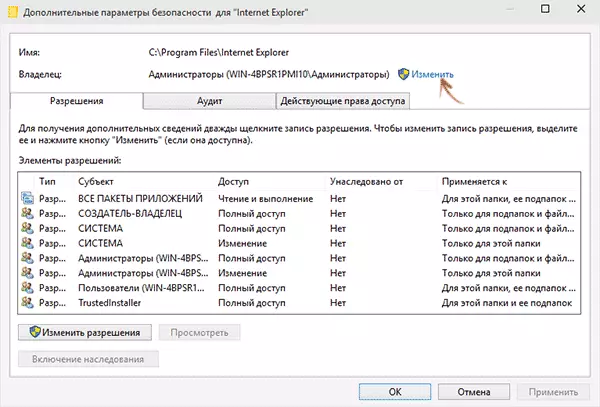
In the next window (select user or group), click the "Advanced" button.

After that, in the window that appears, click the Search button, and then find and highlight the search results for your user and click OK. The next window also sufficiently press OK.
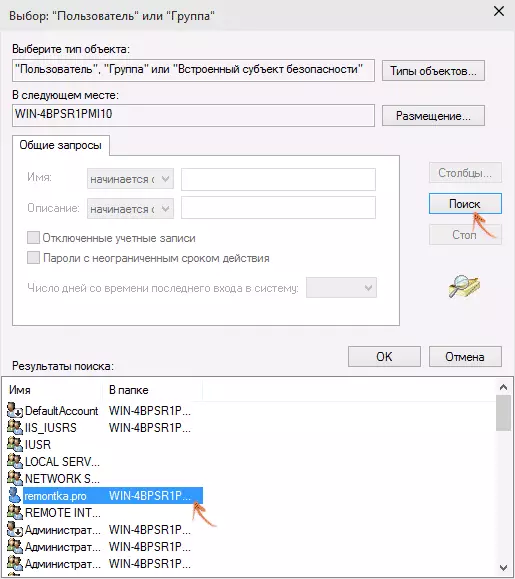
If you change the owner of the folder, not a separate file, then it will also be logical to mark the item "Replace the owner of sub-connecters and objects" (changes the owner of subfolders and files).
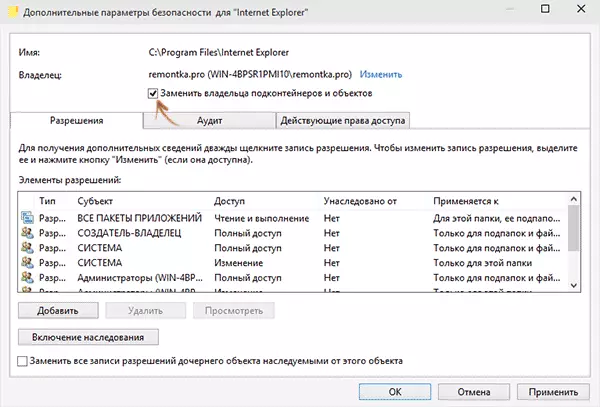
Click OK.
Install permissions for the user
So, we have become the owner, but most likely, it is not possible to remove it yet: we lack permission. Go back to "Properties" - "Security" of the folder and click the "Advanced" button.
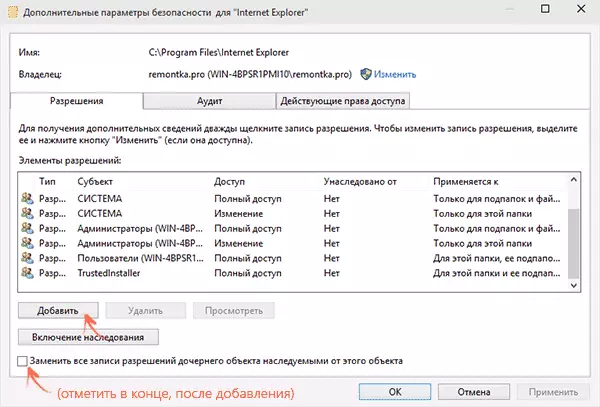
Please note whether the "Permissions" list is your user:
- If NO - Press the Add button below. In the Subject field, click "Select Subject" and through "Advanced" - "Search" (as and when the owner changed) to find your user. We establish "full access" for it. You should also mark the item "Replace all records of the child object permissions" at the bottom of the "Advanced Security Settings" window. Apply all the settings made.
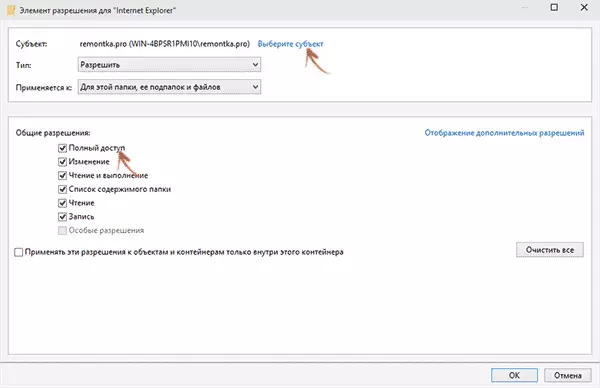
- If there is - choose the user, press the "Change" button and set the full access rights. We celebrate the item "Replace all records of the permissions of the child object." Apply settings.
After that, when you delete a folder, the message is refused to be refused and you need to request permission from administrators to appear should not, as well as with other actions with an item.
Video instruction
Well, the promised video instruction on what to do if, when you delete a file or folder, Windows writes, which is denied access and you need to request permission from administrators.
I hope the information provided helped you. If this is not the case, I will be glad to answer your questions.
